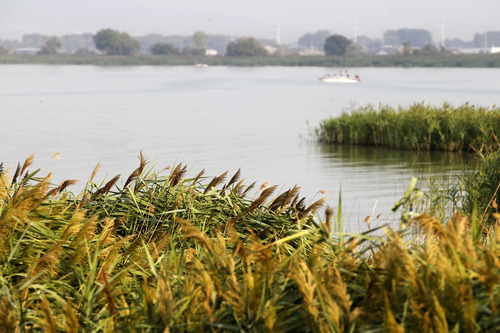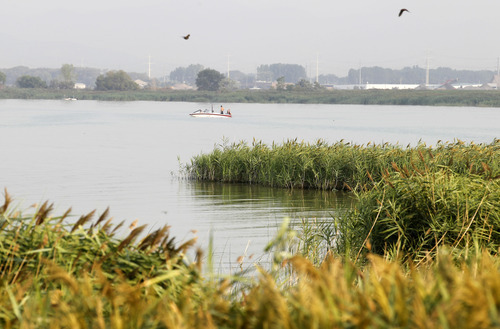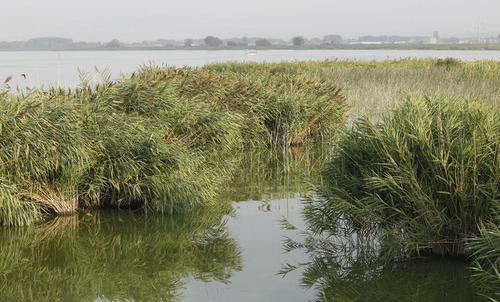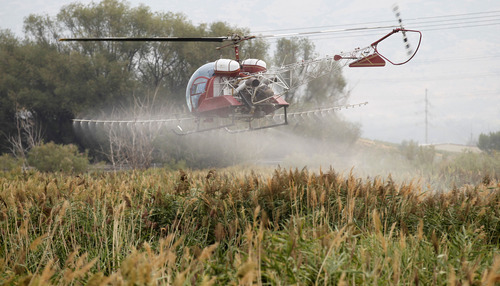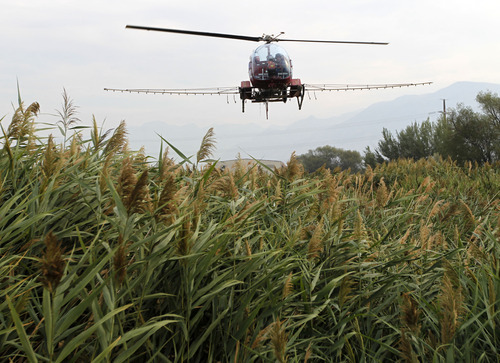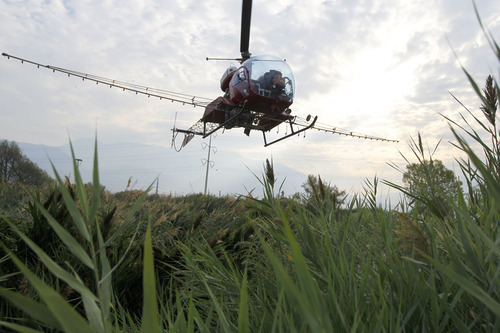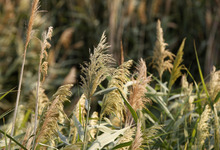This is an archived article that was published on sltrib.com in 2012, and information in the article may be outdated. It is provided only for personal research purposes and may not be reprinted.
They're calling it a "war on weeds."
On Thursday, workers with the Utah Department of Agriculture and Food boarded a helicopter and sprayed a 1,500-acre swath of nasty weeds called phragmites (prounounced frag-mighties) north of Utah Lake near Lindon. The weed infestation had become a nuisance to beaches and nearby farms, growing so dense in some spots as to block lake access, inhibit water flow, damage wildlife habitat and threaten grazing lands.
"This is a project that's designed to win back the shoreline of Utah Lake and beat back the invasive species. . .and help the citizens of Utah County to enjoy the beaches they once saw," department spokesman Larry Lewis said.
The $115,000 aerial bombardment — part of a $1 million total Utah weed abatement program funded by the Utah Legislature — was conducted in cooperation with the Utah Lake Commission, the Division of Wildlife Resources, Utah County Commission and private land owners.
At 6 a.m., agriculture officials sprayed the weeds with AquaNeat, a herbicide similar to the weed killer Roundup used by homeowners, a chemical that officials insist has no associated dangers when used according to label directions.
"It's being applied by helicopter that flies low and slow," Lewis said.
Phragmites are tall, thin reeds native to North American that can grow in dense thickets as tall as 15 feet high, most commonly in canals and wetlands.
They've infested over 5,000 acres around Utah Lake, though Thursday's project targeted just 1,500 acres north of the Lindon marina. Lewis said the rest of the acreage will be addressed as soon as more funding is available.
The herbicide should wipe out the weeds in a matter of weeks, but officials won't fully reclaim the affected lands for years, Lewis said. Eradication requires killing a thick root system to prevent them from growing back and spreading again.
The Utah Lake infestation has grown for two decades, not only invading the lake's north shores but also the properties of as many as 40 adjacent landowners, including residents and farmers. Weeds have blocked boaters, cut oxygen supply for fish and ruined agricultural lands.
"It's an economic issue," Lewis said. "It touches many Utahns in many ways."
Weeds: More than just ugly
Weeds have devastating effects, according to the Utah Department of Agriculture and Food (UDAF):
Wildfires • Summer fires can be fueled by dry weeds. The 2007 Milford Flat Fire, for example, burned through 300,000 acres of cheatgrass in Millard County.
Food prices • Weeds lower yields and crop quality by sucking moisture and nutrients from other crops, costing consumers.
Livestock • At least six types of weeds are toxic to livestock.


